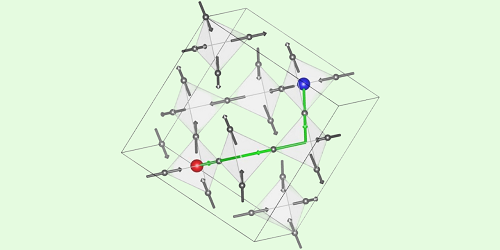Ultracold Dynamics of Spin Ices
Water ice contains a crystalline lattice of water molecules. Similarly, a material called a spin ice contains a crystalline lattice of magnetic spins. At ultralow temperatures, the competing interactions of these spins induce exotic phenomena—such as quasiparticles that act like isolated magnetic charges, or magnetic monopoles. This behavior has defied understanding, but a step forward would be to determine the conditions for which the spin ices are in or out of thermodynamic equilibrium. Now Félix Morineau at the Institut Néel (CNRS, Grenoble Alpes University), France, and his colleagues have helped fill this knowledge gap [1].
A key tool in statistical physics is the so-called fluctuation–dissipation relation, which links a system’s thermal fluctuations to its energy dissipation in response to external perturbations. A system in thermodynamic equilibrium satisfies this relation, while one out of equilibrium does not. Through high-precision measurements of two parameters (magnetic noise and alternating-current susceptibility), Morineau and his colleagues tested the relation in two archetypal spin ices—dysprosium titanate and holmium titanate—as they lowered the temperature from a few kelvins to 150 mK.
The team found that the fluctuation–dissipation relation was satisfied above 400 mK. A detailed analysis revealed, however, that the spin ices were in global thermodynamic equilibrium only above 650 mK. From 400 to 650 mK, the equilibrium was only local, with regions of the materials trapped in certain magnetization states. Below 400 mK, the relation was violated, and the spin ices were out of equilibrium. In this regime, the researchers observed a previously unreported dissipation process, in addition to aging effects, in which the system’s properties depended on the time elapsed since the system was prepared.
–Ryan Wilkinson
Ryan Wilkinson is a Corresponding Editor for Physics Magazine based in Durham, UK.
References
- F. Morineau et al., “Satisfaction and violation of the fluctuation-dissipation relation in spin ice materials,” Phys. Rev. Lett. 134, 096702 (2025).




